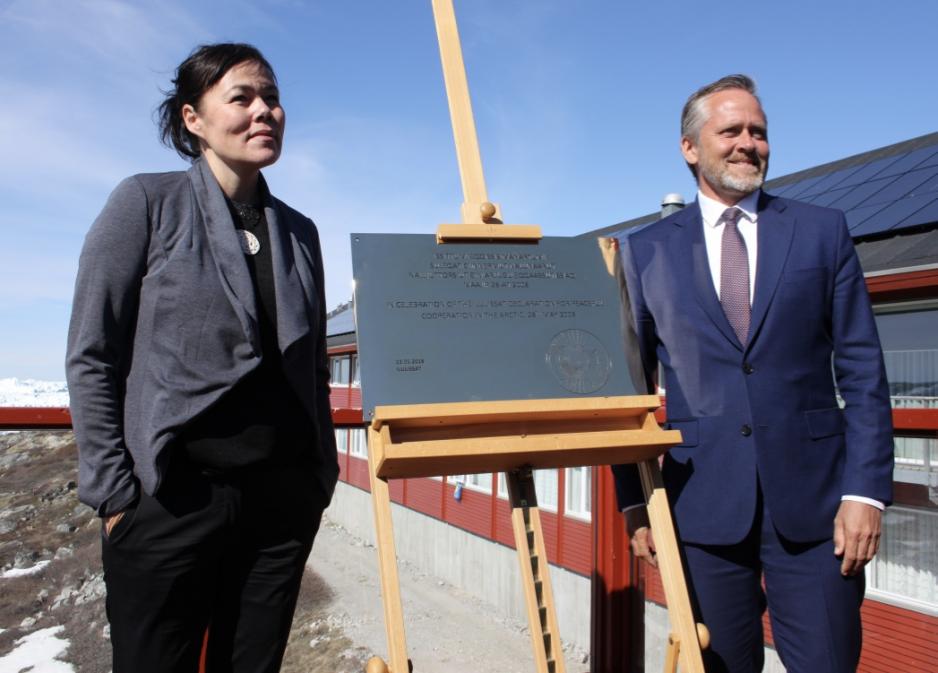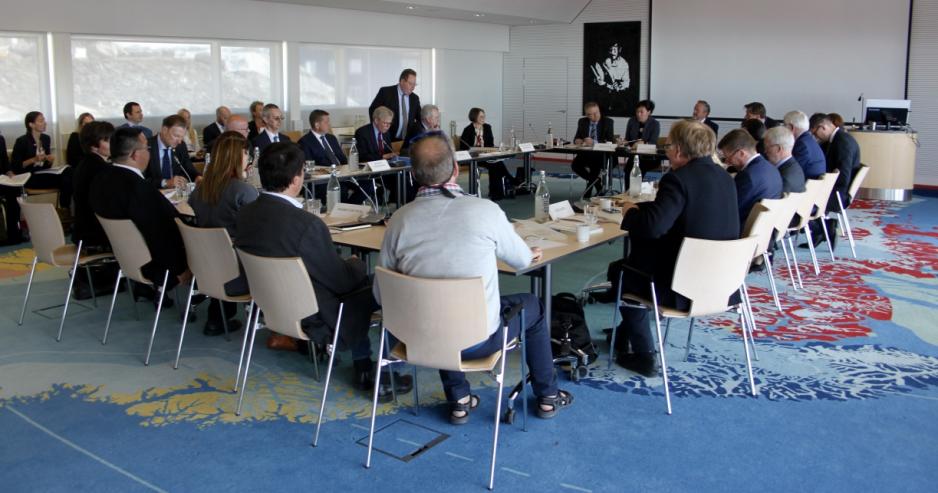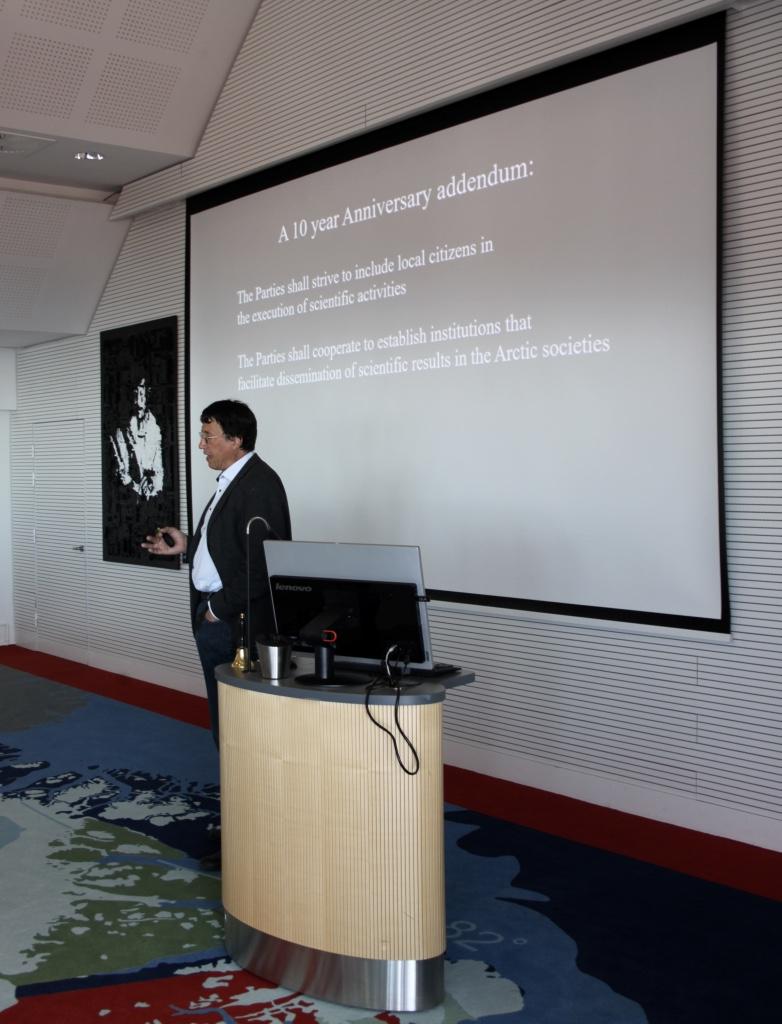Ilulissat: Peace, scientific cooperation and Hans Island

In 2008, the signing of the Ilulissat Declaration poured cold water on the rhetorical escalation in the wake of the (in)famous Russian flag planting on the geographical North Pole seabed. Ten years later, the Arctic states are celebrating the achievement with a 2-day meeting in Ilulissat. On the second day, peace, borders and scientific cooperation were on top of the agenda.
Before the official program of the day began, Canada and the Kingdom of Denmark sent out a press release revealing a somewhat surprising initiative of establishing a joint task force on boundary issues regarding the “sovereignty of Hans Island, the maritime boundary line in Lincoln Sea and the Labrador Sea continental shelf overlap beyond 200 nautical miles”.
The announcement was perfectly timed and follows the spirit of finding constructive and peaceful solutions to boundary disputes, as underlined in the Ilulissat Declaration. Especially the barren, uninhabitated, 1.3 km2 Hans Island (in Greenlandic: Tartupaluk) has been object of reciprocated sovereignty teasing with exchange of whiskey and schnapps bottles and hoisting of Danish and Canadian flags since 1973.
In 2015, Michael Byers from University of British Columbia and Michael Böss from Aarhus University, pleaded for the island to be put into a condominium of shared authority. In response, Greenlandic opposition leader, Sara Olsvig, suggested that it should be declared ‘Inuit Land’ as it has been used for hunting by the Inuit since the 14th Century. None of the alternative proposals were followed-up and instead a state-centered solution now seems to be the only possible outcome.
Responding to the question why the new initiative will be more successful than previous attempts, Denmark’s Minister of Foreign Affairs replied: “because it is a new format with a different structure”. What that exactly means is, however, not yet clear.

Peace and fruitful cooperation in the Arctic
The first session of the official program was closed to the press, so participants could speak freely about how to ‘maintain peace and fruitful cooperation in the Arctic’. Hence, the only information available from this session was the countries’ respective speaking points which they each had five minutes to present.
- Denmark and Greenland: ‘Welcome’.
- Canada: ‘Peaceful settlement of the territorial claims to the Arctic Ocean’.
- Faroe Islands: ‘Business opportunities for small and medium sized enterprises’.
- Finland: ‘Arctic Council Chairmanship’.
- Iceland: ‘Sustainable Energy in the Arctic region’.
- Norway: Business development in the Arctic while ensuring sustainable management of the marine environment’.
- Russia: ‘Agreement on unregulated fishing in the Arctic Ocean’.
- Sweden: ‘Adaptation and resilience in Arctic communities’.
- USA: ‘Cooperation and marine safety in the Arctic’.
Representatives from the Saami Council and the Inuit Circumpolar Council (ICC) also got the opportunity to state their opinion. While there were no announced speaking points, rumors said that especially the Saami representative strongly disagreed with the state-centrism of the Ilulissat Declaration. While carefully not going into a debate over the concept of sovereignty – as they did ten years ago – ICC instead argued that the Arctic should be officially declared ‘a zone of peace’ with support from the world society.
Science as a bridge-builder across national and societal borders
In the subsequent session – which was open to the press – the Arctic Council’s Agreement on Enhancing International Arctic Scientific Cooperation officially entered into force, hence improving the mobility of scientists and their equipment across national borders, among other things. Director of the Arctic Council’s Secretariat, Nina Buvang Vaaja, chaired the session and highlighted the importance of having both Russia and the USA as signatories to the agreement.

Following up on his presentation the previous day in Ilimanaq, Professor Minik Rosing emphasized the importance of the agreement’s article ,9 which encourages the use of traditional knowledge in scientific activities and to communicate with and welcoming participants holding traditional knowledge into Arctic research projects.
Additionally, Rosing suggested an amendment to establish institutions that facilitate dissemination of scientific results in the Arctic societies. For Greenland that means getting a research hub soon. Something, which despite being a top priority for the Danish government has not yet been realized.
Takuss
After the session, the anniversary concluded with a family photo next to the commemorative plaque, which the mayor of Ilulissat will later get the honor to place where people henceforth can reminisce the Declaration of 2008 and how everyone are best served with a peaceful status quo in the Arctic. Not least the people living there.
